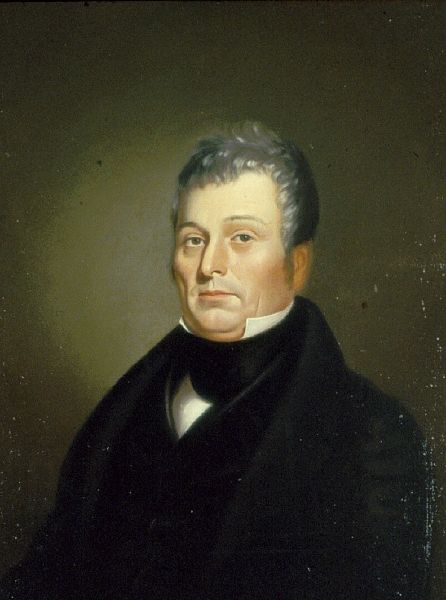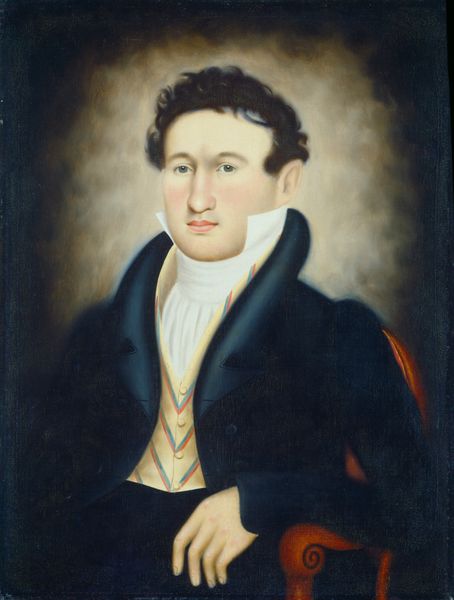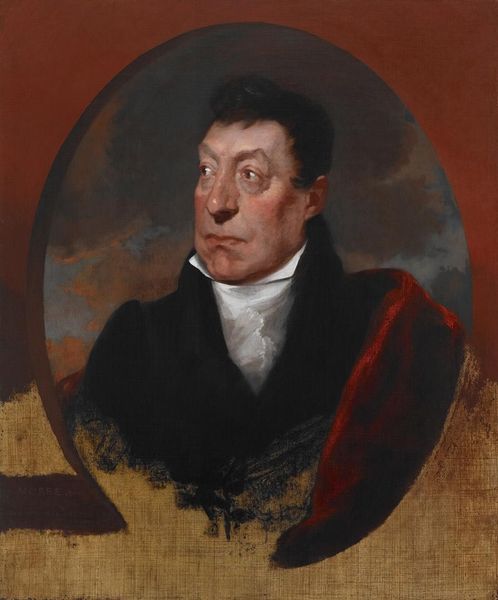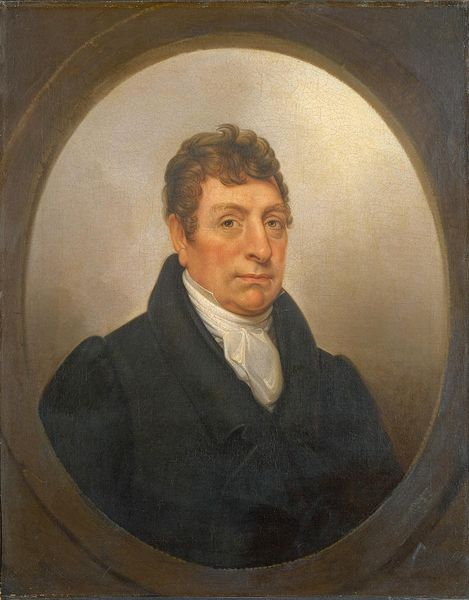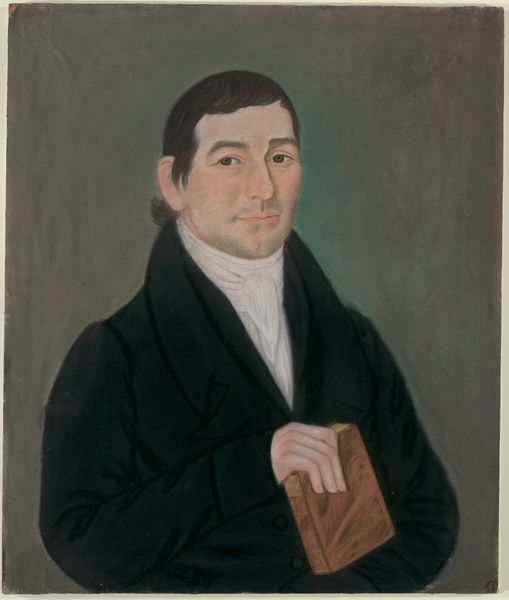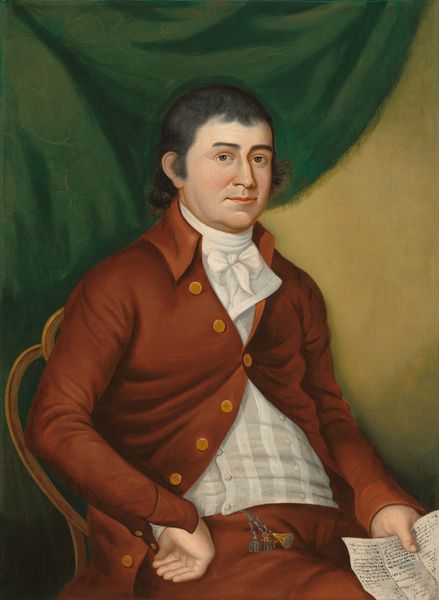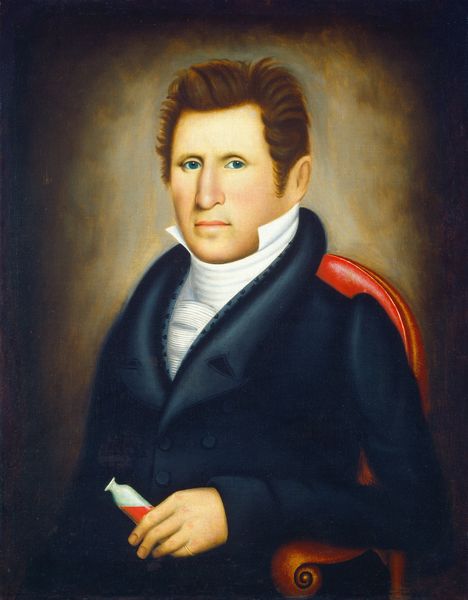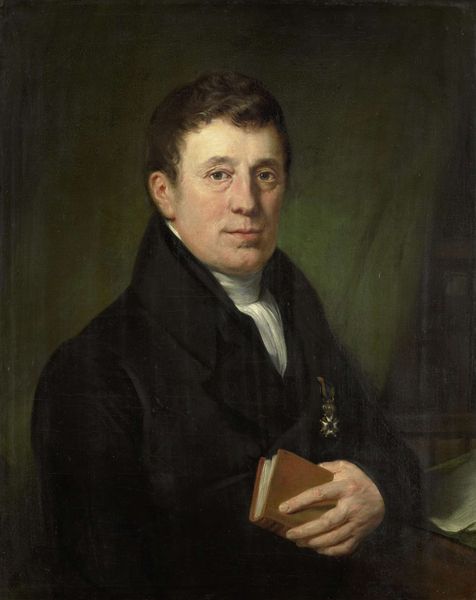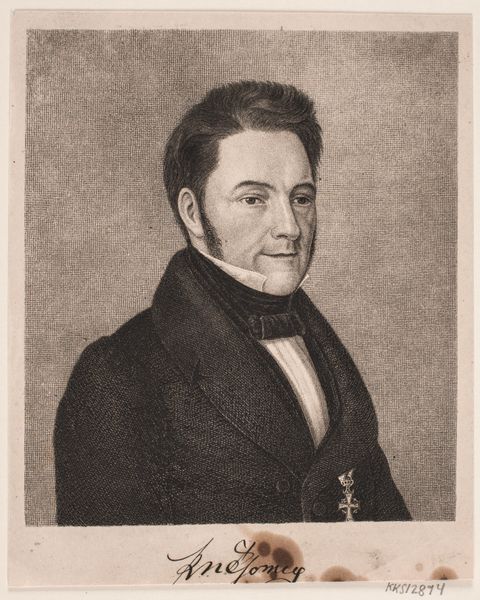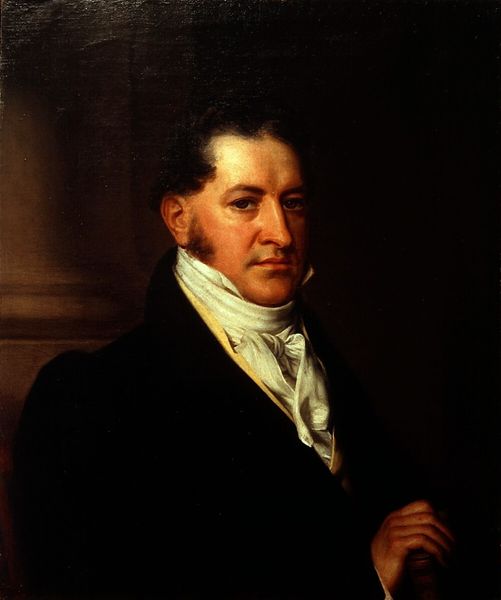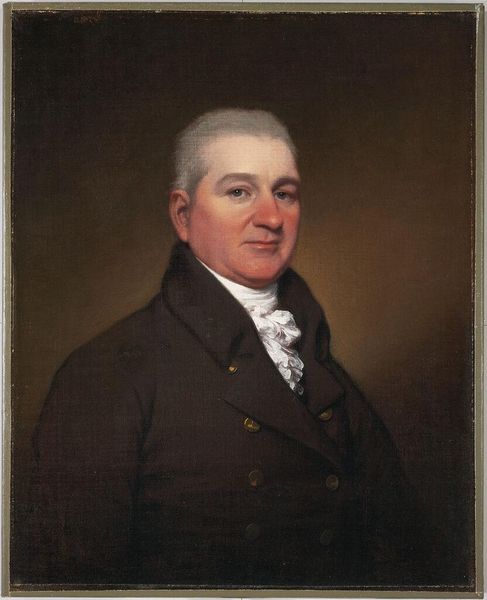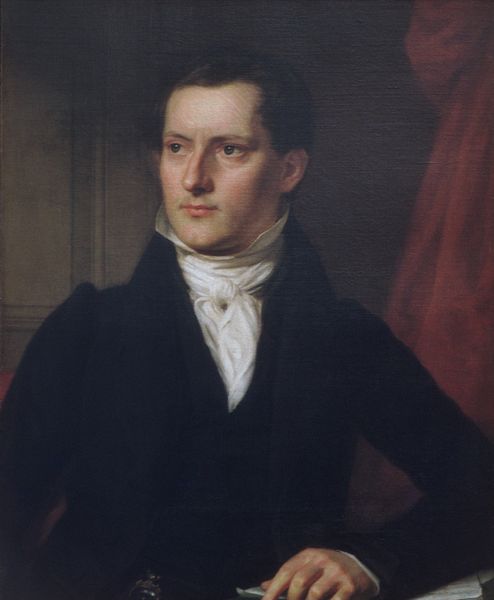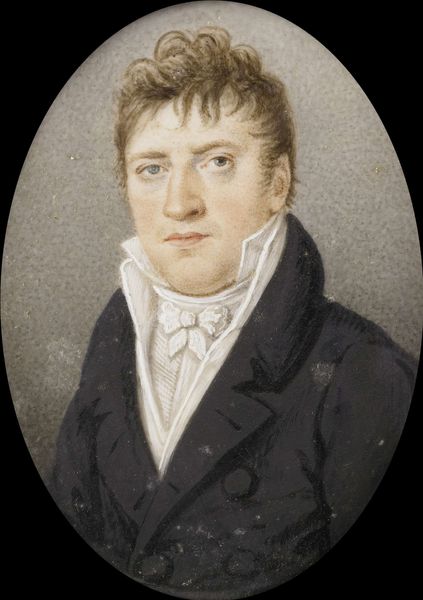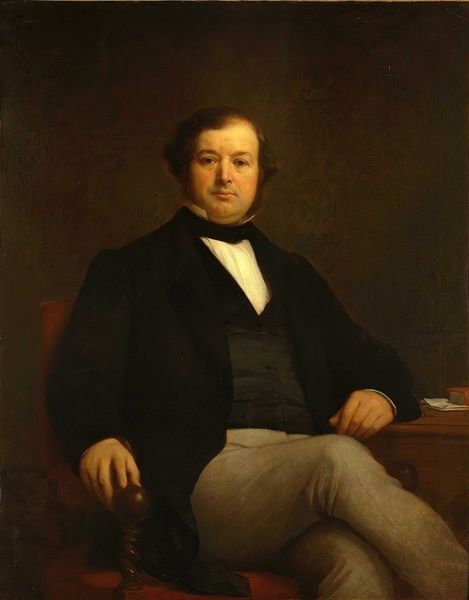
oil-paint
#
portrait
#
oil-paint
#
romanticism
#
academic-art
Dimensions: 67.3 × 57.5 cm (26 1/2 × 22 5/8 in.)
Copyright: Public Domain
Editor: Here we have "Man in Black," an oil painting from the early 19th century, sometime between 1820 and 1840, by an anonymous artist. The man's intense gaze really stands out. How would you interpret this work from a formalist point of view? Curator: The formal elements are quite striking, wouldn't you agree? Note the artist's calculated use of chiaroscuro. How does the contrast between the dark background and the light falling across the man’s face guide your eye? Editor: It definitely emphasizes his face and that crisp white cravat, almost creating a focal point in the sea of black. Curator: Precisely. And consider the texture—or rather, the lack thereof. The artist achieves a smooth, almost porcelain-like surface, particularly on the face. What does this tell us about the artist's intention and technique? This, contrasted with the implied texture of the ruffled cravat. Editor: I suppose it suggests a focus on idealized representation, a kind of striving for perfection and it highlights their difference of class in dress, or… conveys something of that nature? Curator: Indeed, and if we consider the overall composition—the tight framing, the central positioning of the figure—these elements contribute to a sense of directness and perhaps a hint of the subject’s importance, as well as his control within the frame. Editor: That makes sense! Analyzing just the formal aspects really sheds new light on how to view this work. Thanks! Curator: My pleasure. Examining these technical elements is often the key to understanding the overall artistic intention.
Comments
No comments
Be the first to comment and join the conversation on the ultimate creative platform.
